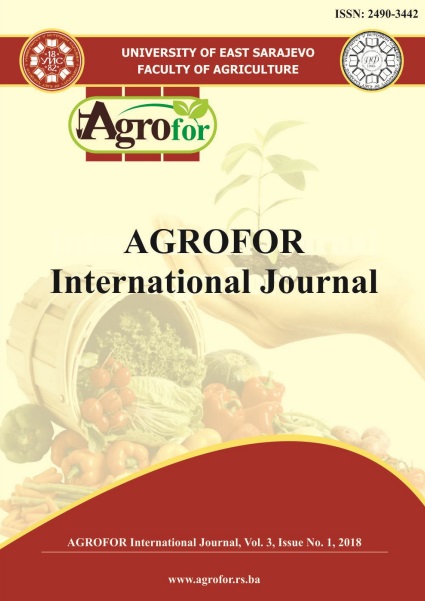PLANT GENETIC RESOURCES AND GASTRONOMIC TOURISM
DOI:
https://doi.org/10.7251/AGRENG1801043AAbstract
Plant genetic resources for food and agriculture (PGRFA) came into the world
attention due to their genetic erosion upon the adoption of the International Treaty
on Plant Genetic Resources for Food and Agriculture (Plant Treaty) in 2001.
Among these, landraces are recognized for their value when are maintained in the
same agro-ecosystem for more than 50 years. However, food security as a complex
and sensitive subject, is acting between national and local levels and depends on
socio-economic attributes of rural societies deeply embedded in the history of the
place grounding the traditional knowledge (TK) related to local communities'
lifestyle. In the past 25 years Romania lost more than 75% of its own plant genetic
resources based on recorded official data, even its economy depends on the activity
of more than 69% small landowners (i.e. over 800,000.00). From economic point
of view, such type of agriculture is not productive. However, 32% of the today
Romania’s territory is declared as protected areas and most of these arable lands
are in buffering zones or inside protected areas. Studying the village Ațel, from
Sibiu county, Valea Târnavelor (i.e. in the buffering zones of protected areas),
reveals that rural areas are rich pools of landraces that have been preserved and
cultivated by at least 50% of local householders for more than 50 years (i.e. wheat,
corn, rye, barley, oats, peas, cabbage, beans, onions, lettuce, spinach, celery,
parsley, garlic, carrot, dills). The poorness of these villages in the today economic
terms is counteracted by the richness of biodiversity, TK, PGRFA and local
gastronomy. The scope of this article is to envisage original approaches, for
connecting local TK to economy based on gastronomic tourism that may provide
these villages the chance to become part of it.

